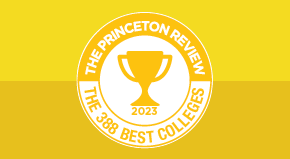Most families borrow money to help defray the cost of education.

The greatest portion of financial aid comes in the form of loans. Loans may not be as attractive as grants or scholarships, but don't dismiss them outright. A government–sponsored loan is one of the best deals in town. From federal to private, here’s a rundown of what every college applicant needs to know about student loans.
Federal Student Loans
William D. Ford Federal Direct Loans are the most common type of aid conferred to undergraduate and graduate students. They come in four varieties:
Direct Subsidized Loans
Direct Subsidized Loans are for undergraduate students with financial need. The government pays the interest while you are in school and for the first six months after you leave school. These loans have fixed interest rates, and repayment begins six months after you graduate, leave school or drop below half-time status.
Direct Unsubsidized Loans
Direct Unsubsidized Loans are for undergraduate and graduate students, and there is no requirement to show financial need. You are responsible for paying the interest at all times. Interest rates are fixed for the life of the loan, and repayment begins six months after you graduate, leave school or drop below half-time status.
Direct PLUS Loans
Direct PLUS Loans are for graduate students and parents of dependent undergraduates only. Interest rates are fixed but higher than the rates of Direct Subsidized, and Direct Unsubsidized Loans. For parents repayment begins after the loan has been fully paid out, but for graduate students the loan will be placed into deferment until six months after you leave school or drop below half-time status.
Parents and graduate student may borrow up to the cost of attendance minus all other aid. Unlike Direct Subsidized, or Direct Unsubsidized loans, eligibility relies on a good credit history. If a parent cannot secure a PLUS loan, the student may qualify for additional unsubsidized loans
Direct Consolidation Loans
Direct Consolidation Loans allow you to combine most federal student loans into one bill with one monthly payment. The loan has a fixed interest rate and gives you thirty years to back it back, which can lower monthly payments. Make sure to consider the impacts of losing any original loan benefits or of increasing the length of your repayment period before you go this permanent route. Once loans are combined, they cannot be separated again.
State Loans
Offered by state educational financing authorities such as MEFA in Massachusetts or CHESLA in Connecticut, some of these loans allow state residents to borrow funds for schools both in-state and out-of-state. Some also make such loans available if an out-of-state student is attending a participating school within the state that offers the loans. Most have a fixed-rate option is that sometimes lower than some federal loan options.
Private Loans
Generally offered by banks or other private lenders, these mostly variable-rate loans can start out lower than the federal options, but if interest rates rise appreciably they can become very costly. Repayment often begins while you are still in school, and the loans are unsubsidized, meaning you are responsible for paying the interest at all times.
Check out Rob Franek talking about student loans on Good Morning Dallas:
Explore Colleges For You
Connect with our featured colleges to find schools that both match your interests and are looking for students like you.
Get Started on Athletic Scholarships & Recruiting!
Join athletes who were discovered, recruited & often received scholarships after connecting with NCSA's 42,000 strong network of coaches.
Best 388 Colleges
154,000 students rate everything from their professors to their campus social scene.




